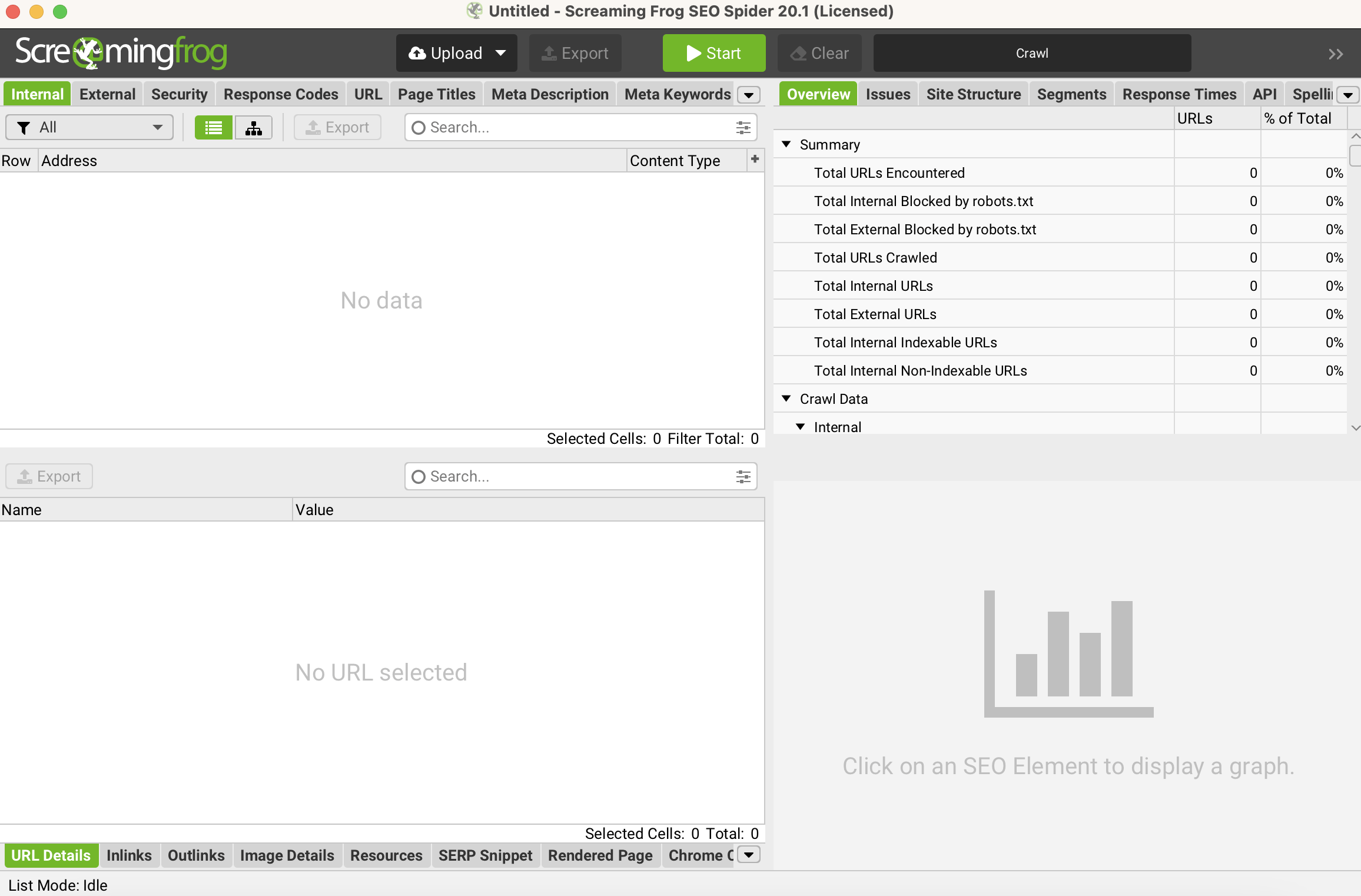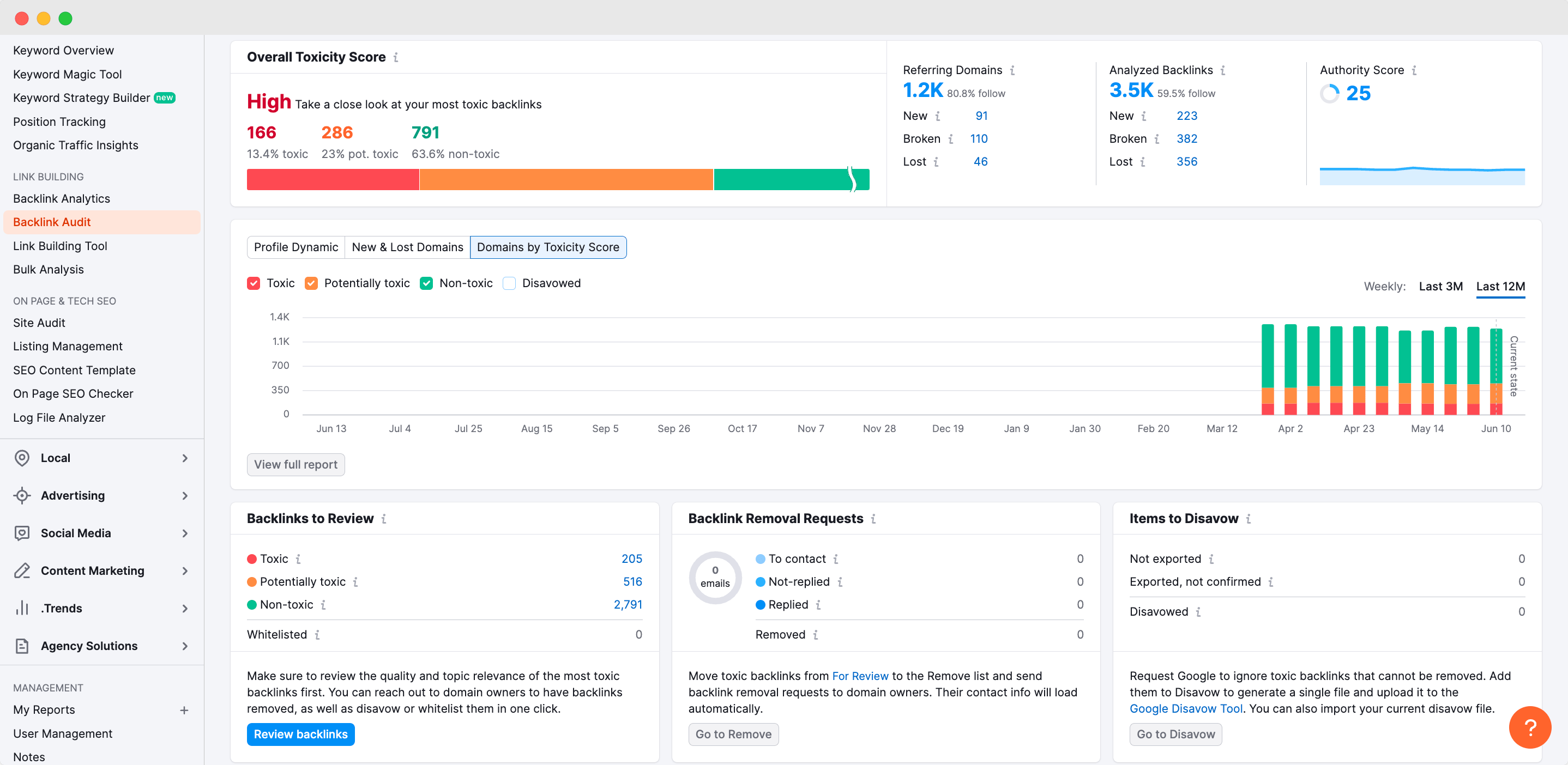
Optimising your website for search engines will help you to improve your online visibility.
Search engine optimisation is the process of improving the quality and quantity of website traffic from search engines.
A Technical SEO audit is the foundation of a high-performing website. However, most people find it difficult to perform a technical SEO audit because it’s complicated and time-consuming.
In this article, we will take you through the steps of an SEO audit to help you boost your website ranking on search engines.
What Is an SEO Audit?
An SEO audit is the process of identifying issues that could prevent your site from ranking on Google and other search engines. It is basically a checkup for your website’s health from a search engine’s perspective.
During an SEO audit, you will check the technical aspects of your website’s SEO like indexation, metadata, backlinks, site speed, etc. as well as highlight all the upcoming key actions that need to be implemented or fixed.
The purpose of an SEO audit is to identify as many foundational issues affecting organic search performance as possible so that you can fix them and hopefully rank better.

Why Is It Important?
The websites that rank in the top 3 positions on Google get approximately 55% of the clicks (Backlinko 2023) leading to more traffic and sales.
When you implement actions from an SEO audit on your website, you improve your chances of appearing on the first page of Google.
Which Factors Affect Your Website’s SEO Performance?
The 3 main factors affecting your website SEO performance:
- Technical factors: These include all technical factors like loading time, web hosting, and indexing of the website on search engines.
- On-page factors: These include factors such as the quality of content and target keywords.
- Off-page factors: These are the external factors like backlinks and other outside references like reviews and mentions
How Long Does an SEO Audit Take?
There are 2 parts to an SEO audit:
- An audit (an act of using a variety of tools to find website issues)
- Implementing fixes and recommendations from the audit
Even when audits are completed relatively quickly, the implementation often takes a long time.
On average, the SEO audit and implementation usually take between 2-6 weeks to conduct.
Three factors can affect the timeframe for an audit:
- Automation vs. manual review: SEO tools can automate some aspects of the audit, but a human SEO expert will still need to review the data and make recommendations. This manual review adds time.
- Depth of analysis: A basic audit might just focus on technical SEO issues, while a more in-depth audit might also consider content quality, competitor analysis, and link profile. The more in-depth you go, the longer it takes.
- Size of your website:
- Small website (5-10 pages): A basic audit for a small website can be done in just a few hours (2-4).
- Medium website (50-100 pages): For a medium-sized website, a more thorough audit might take several days (6-10 hours).
- Large website (hundreds or thousands of pages): For large and complex websites, a comprehensive SEO audit can take weeks (2-6 weeks). This is because there’s a lot more data to analyse.
What SEO Audit Tools You Need
The SEO audit tools you need depend on your website’s size and budget. Below are the most popular tools used for an SEO audit:
- Screaming Frog
- Raven Tools
- Microsoft Excel (or Google Sheets)
- SEMrush
- Ahrefs
- CognitiveSEO
- Google Analytics
- Google Search Console
- Google PageSpeed Insights
- Lumar
- SpyFu
- SEO Site Checkup
- WooRank
How to Do an SEO Audit: Step-by-Step
We follow these 10 steps below to conduct a technical SEO audit for our clients.
STEP 1: Start by Crawling Your Website
Website crawling should be your first step in an SEO audit. Website crawling, also known as web spidering, is like an automated librarian constantly exploring the vast digital library of the internet to check which websites exist and what they contain.
At Digivate we use a tool called Screaming Frog to check crawled pages, metadata, broken links, redirects, duplicate content, and more.
Website crawling is important because a technically robust site can make a difference between your website ranking on page 1 or page 2.

STEP 2: Review Your Sitemap
A sitemap gives your website a structure and provides information about the relationships between all the pages and categories.
In more technical terms:
A sitemap is an XML file that lists all your website’s URLs (pages, videos, images, etc) and helps search engines understand and crawl your website more intelligently.
There are two main ways to create a sitemap for a website:
- Manually creating an XML Sitemap
This method is ideal for small websites or those who are comfortable with code. Here’s a simplified breakdown:
- Identify important pages: Decide which pages you want search engines to find and include in their index. This should include all your main content pages, important blog posts, and contact information.
- Create an XML file: XML stands for Extensible Markup Language, a special coding format for search engines. You can use a simple text editor like Notepad to create this file.
- List your URLs: In the XML file, you’ll need to list the URLs of all the important pages you identified earlier, following a specific format with tags.
- Optional details: You can include some additional information for each URL, like how often the page changes (update frequency) and how important it is compared to other pages (priority).
- Upload and submit: Once your XML sitemap is complete, upload it to the root directory of your website (where the main website files are stored). Then, submit the sitemap to search engines like Google Search Console.
- Using Sitemap Generators
This is a simpler option for most users. Many website platforms and SEO tools offer built-in sitemap generators. Here’s how it works:
- Identify the tool: Check if your website platform (e.g., WordPress, Wix) or SEO tool has a built-in sitemap generator.
- Generate the Sitemap: Follow the tool’s instructions to generate an XML sitemap for your website. This might involve a few clicks or filling out a form.
- Submit the Sitemap: The tool might offer to automatically submit the sitemap to search engines, or you may need to submit it manually using Search Console.
STEP 3. Pick a Browsable Version of Your Website
Every site should have the following two properties set up in the Search Console:
- http://www.digivate.com
- http://digivate.com
If your website has an SSL certificate setup, you would also add two additional properties:
- https://www.digivate.com
- https://digivate.com
Once you’ve set up all the different versions of your website on Google Search Console, you should ensure that only one version is browsable on search engines.
When you index multiple versions of your website to search engines, it becomes difficult for Google to pick the one you want to rank on SERPs.
All the different variations of your websites are seen as separate entities which can be a problem for building a unified, effective backlink profile or increasing the authority of the website.
Your preferred site version affects every reference of your website’s URL – both on (internal links) and off-site (external links).
STEP 4: Fix Broken Internal Links
Internal links are an important ranking factor. Internal links are important for ranking for two main reasons: they help search engines understand your website and they distribute “link equity” around your site.
Often, when businesses remove some of the pages of their website, the internal links break and show as 404 pages.
An SEO audit should highlight all the broken pages, so you can either update them with new content or remove them.
STEP 5: Do a Backlink Audit
Topically relevant high-quality backlinks to your website show Google that other websites value your content and find it worthy of linking to – this increases the authority of your brand.
During a backlink audit, you’ll identify and remove all toxic backlinks pointing to your website. Toxic backlinks are usually low-quality network links that only damage your website’s authority.
We use SEMrush to detect and remove toxic links.

STEP 6: Check if Your Website is Mobile Friendly
Your website has to be mobile-friendly because nearly 60% of global website traffic now comes from mobile (Statista 2024).
Your site must be easy to navigate on mobile and tablet screens.
Google Search Console will highlight all the issues on your website that may be affecting user mobile experience.
Here are some tips to make your website mobile-friendly:
- Decide on a mobile-friendly configuration for your website – or use a responsive design
- Compress images and other large files on your website to improve loading time
- Implement Accelerated Mobile Pages (AMP) markup on your web pages.
- Use large and easy-to-read fonts and make sure your buttons are large enough to tap
- Simplify your navigation
- Test your website on mobile devices
STEP 7: Test Your Site Speed
Most people will not wait around for your page to load.
38% of people are likely to bounce off when your website takes over 5 seconds to load (WebFX 2024).
Therefore, you should check how fast your website loads and take all measures to optimise the speed.
Here are some quick tips for a faster website:
- Optimise images: Reduce their size without sacrificing quality.
- Minify code: Remove unnecessary characters from your website’s code.
- Leverage browser caching: Store website elements on visitors’ devices for faster future loading.
- Reduce HTTP requests: Minimise the number of files your website needs to load.
- Choose a fast web host: A reliable hosting provider can make a big difference.
You can use Google PageSpeed Insights to determine how fast your website is and how it competes with other websites in your target niche.

STEP 8: Improve On-Page SEO
Screaming Frog helps you analyse important on-page SEO elements like title tags, meta descriptions, and headings. You can see if they’re missing, too long, or not keyword-rich enough, allowing you to optimise them for search engines.
It also helps you identify areas where you can improve your on-page SEO. For instance, it can find pages missing alt text for images, which is important for both SEO and accessibility.
Onsite SEO fixes include:
- Optimise all the headlines, meta descriptions, and title tags
- Add or update meta information
- Fix spelling and grammar mistakes
- Expand content on pages with too little. Plus, optimise them for their target keywords
- Provide alt tags on all images and videos on your website.
- Ensure your web pages have internal links
- Remove or update all ‘Orphan pages’ to make more room for Google to crawl pages that matter to your business.
NB! Orphan pages are thin pages that don’t get any traffic and are not linked to other pages on your website, making it difficult for Google to find them.
We use the SEMrush tool to improve our clients’ on-page SEO.
STEP 9: Flatten the Website Architecture
Traditionally, websites might have a deep structure, with lots of subfolders and subpages nested within each other. Imagine a website about animals with separate folders for “mammals,” “birds,” “reptiles,” etc., and then subfolders within each for specific animals (e.g., “mammals” with subfolders for “lions,” “tigers,” and “bears”). This is a deep architecture.
Flattening means reducing the number of clicks it takes to reach any page on your website. Ideally, all important pages should be accessible within 3-4 clicks from the homepage. In the animal website example, this might involve listing all animal categories directly on the homepage or on a main “Animals” page, instead of burying them in subfolders.
The site architecture should link all the web pages in a logical hierarchy. You should reduce the click depth and position the most important web pages close to the home page.
This is because Google assumes that pages buried deeper in your website are less important than those within a few clicks, making it harder for those pages to rank.
STEP 10: Optimise the Website for a Featured Snippet
Featured Snippets are selected search results that are featured on top of Google.
Featured snippets answer the user’s question right away without having to click through to any website. Being featured means getting additional brand exposure in search results.
To get a spot on Featured Snippets on Google you need to rank your questions, comparisons, or preposition keywords at least in the top 5 already.
Here are some tips to optimise your website for a featured snippet:
- Target answer-type questions with clear and concise answers.
- Use structured data markup to highlight key information.
- Format your answer in bullet points, numbered lists or tables for easy reading.
Once you rank in the top 5, you need to reformat the content you have to list a table or a paragraph but with no more than 42 words.
Summary
An SEO audit is a valuable investment for any website owner who wants to improve their search engine ranking and attract more organic traffic. It’s like a checkup for your website’s health, identifying potential issues that could be holding you back in search results.
By following the steps outlined in this guide, you can conduct a basic SEO audit yourself. However, for a more in-depth analysis and to leverage powerful tools, consider contacting an SEO expert.
Need help with a thorough SEO audit, but feel that you lack the skills and don’t have the right tools? Contact our SEO team here.



